This is a two-part post containing first my own, kind of orthodox, view on what constitutes a WECA comic followed by fellow WECA collector Jim Finlay’s view on a finer and more porous line of distinction between the WECA period and the reprint FECA period that followed it. Readers views may fall on one side or the other, or somewhere in between or outside these perspectives and we encourage any clarification of our ideas in your comments.
As much as I’m fond of the term “Canadian White,” my affection for it doesn’t override the imprecision with which it has been employed in collecting and resale circles. Though it has had traditional currency since the sixties, in today’s internet intense collecting and marketing worlds can anybody really provide a one or two sentence definition that tells you what a “Canadian White” is and what it isn’t? Can anybody put the definition of a Canadian White into a tweet?
This term came about because when most of them started turning up collectors’ hands a generation or so after their demise just after the Second World War; people noticed that they were different from American comic books because they had no colour register imprinted over the black-and-white line drawings in their panel work. So when you came across a book like this and its indicia showed that it was printed in Toronto, Vancouver, or Montreal, you knew you had a “Canadian White.”
However, until recently, nobody had really examined the nature and scope of these books and they had their place as outliers in the collecting field. Their rarity and obscurity made them the elusive targets of a relatively esoteric group of collectors. But with columns such as this one and the work of other researchers and the current efforts in reprinting these books, they are coming back into the general Canadian comic book consciousness. Yet it still is not uncommon to see the term being applied on internet auction sites (especially by American dealers) to Canadian reprint books that came out from 1948 to 1953 or so.
It must also be noted that some of these books, such as the early issues of Better Comics, had colour stories in them and that as the war came to a close Anglo-American started producing all of its titles as full colour books and a couple of the other companies tried this conversion in 1946 as well, so that these books weren’t all in just black-and-white.
As you know, I am a proponent of the term “WECA Comic” for a book from this period because of the fact that these Canadian comics came into existence out of a politico-economic manoeuvre by the Canadian government (the War Exchanges Conservation Act, hence the acronym WECA) which banned the importing of American Comics and that these comics disappeared when this Act was gradually repealed by the end of 1946. See my post from a couple of years ago where I first talked about this topic.
I put together a tentative list of books that I think comprise the WECA period in a post from a couple of weeks ago. All these issues fall between the appearance of Robin Hood Comics No. 1 and Better Comics No. 1, March 1941 to the appearance of the last issue of Robin Hood Comics with its cover date of Dec. 1946-Jan. 1947. I feel that all comics printed and published in Canada during this period should be considered WECA comics and those that fall outside this period should not.
In this way, the four Fox reprint titles issued by Anglo-American Comics with the cover dates March, 1941 are WECA comics even though they are reprints and the Classics Comics titles issued by the Toronto offices of Gilberton Publishers in 1946 are also WECA comics. Even reprints of regular American titles such as Exciting Comics No. 39 published by Publication Enterprises of Toronto with the cover date of March-May 1945 should be considered a WECA book. Of the books mentioned in this paragraph, I think only the Fox reprints would be usually considered “Canadian Whites.”
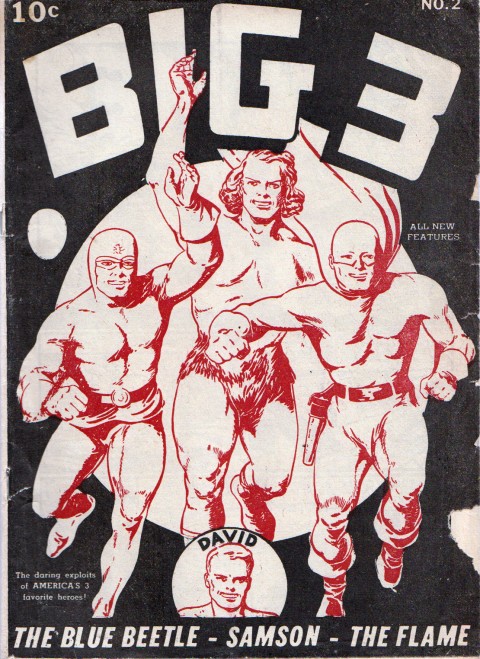
In order for a comic to be considered to be a WECA comic it must not only fall within these 1941-46 parameters but it has to have been published/printed in Canada. By this definition we have to exclude the 128 page Captain America and 128 page Marvel Mystery which were published by Timely in 1942 for distribution in Canada and somehow got around the WECA government restriction on American comics. The Cap Annual was a square bound issue with the cover of Captain America No. 22 and the contents of Marvel Mystery Comics No. 33 and Captain America Comics No. 18 in black-and-white. Since these comics appear to have been published in The States, even though they were only distributed in Canada, to my mind, we cannot consider them WECA books though they’re value to American collectors seems to eclipse the monetary ceiling of any WECA book so far.
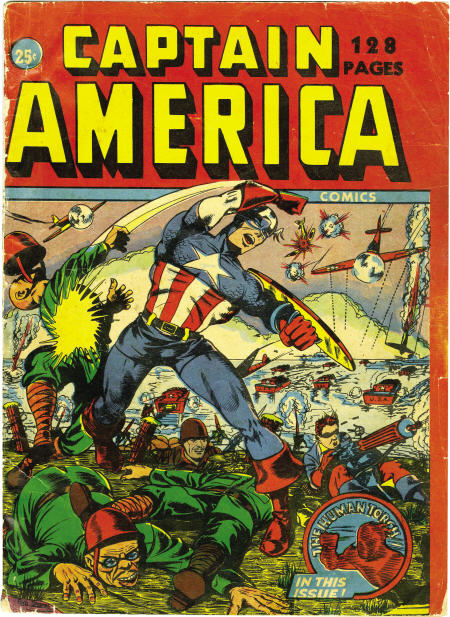
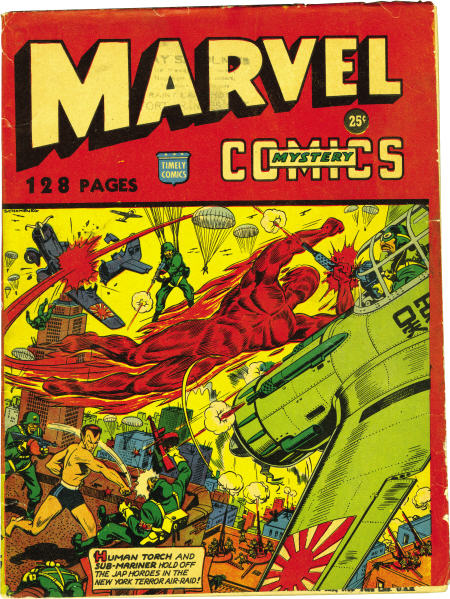
Conversely, we can call those comics published in Canada with printed British prices and/or price stickers on them and distributed in the UK as WECA comics.
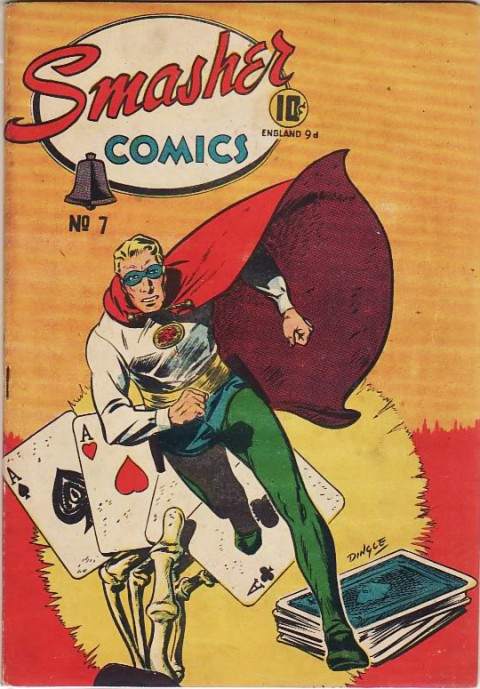
There is a Speed Savage compilation comic for distribution in the UK with a cover that seems to have been drawn by a UK artist, yet still has a 10 cent price point on it. I have never seen the inside of this book and wonder if the book was actually printed in the UK which would place it outside the direct WECA spectrum for me. There were even a couple of the 1946 Anglo-American titles (such as Robin Hood Comics No. 32) that were published in Ohio for distribution in The States. For me these are quasi-WECA or WECA variant books and not precisely WECA comics.
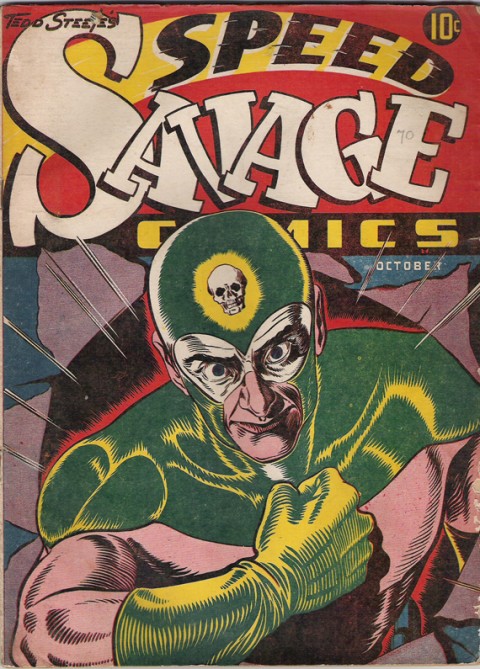
Now, if we take this very orthodox definition as a working definition for that particular set of war-time Canadian comics that include Anglo-American, Bell Features, Educational Projects, and Maple Leaf Publications products, then we must exclude those comics put out in 1947. These include the F. E. Howard issues of Dizzy Don Comics Nos. 3 and 4 and Super Duper Comics No. 3. Manny Easson had already broken away from Features to produce Dizzy Don Comics 21 and 22 through his own company, Dizzy Don Enterprises. The two F. E. Howard issues of Dizzy Don Comics were published in the States for American distribution with issue No. 3 being a reprint of Dizzy Don Comics 22.
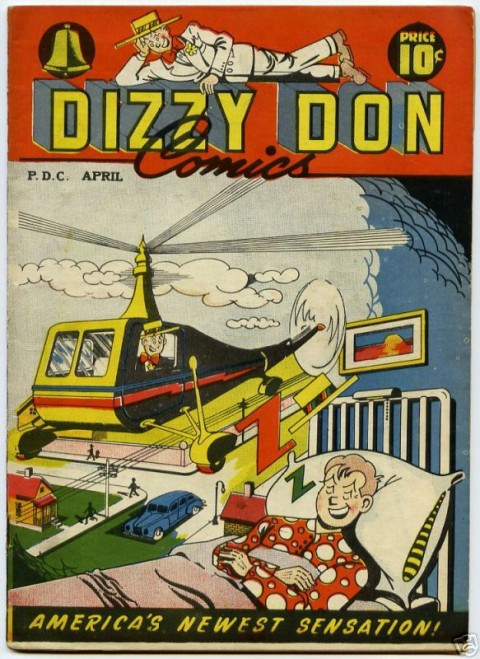
This period of Canadian comic book publication from 1947-1955 or so is mostly a period of reprinting American comic books and I’ve chosen to term it the FECA period and I have briefly discussed it in a previous post.
Super Duper Comics No. 3 is the real “tugger” on my WECA restriction. Besides Dizzy Don, F. E. Howard also purchased the rights of another number of Bell Features characters and put previously unpublished stories in this issue. It leads off with Doc Stearne in his first new full story as “Mr. Monster.” Now in the final panel of Doc Stearne’s appearance in Triumph Comics No. 31 (the final WECA issue of the title), the promise is that the next story will appear in a new title called Unusual Comics. The first issue of this title did appear in 1946 with an original Fred Kelly cover but it only contained American reprinted material.
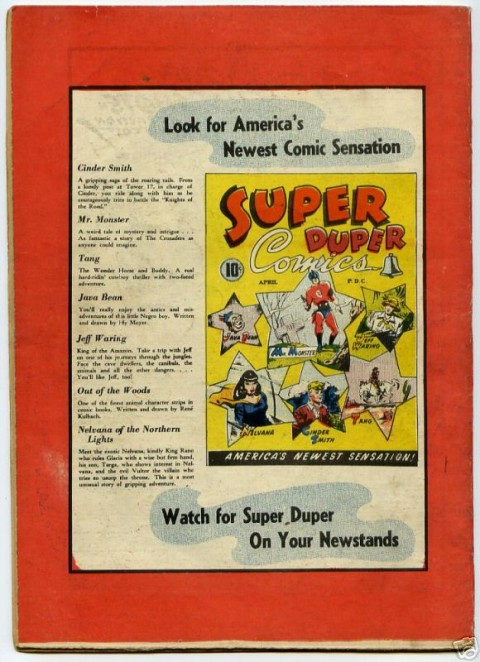
Bell Features tried desperately to continue publishing original Canadian material with Slam-Bang Comics No. 7 in 1946 but this effort was quickly hammered down by the flood of American comics on the shelves. In fact, two of the stories, Murray Karn’s “Jeff Waring” and Rene Kulbach’s “Out of the Woods,” appearing for the first time in Slam-Bang Comics No. 7, are reprinted in Super Duper Comics No. 3.
I’m convinced that the stories that appear for the first time in Super Duper Comics No. 3 were not newly produced in 1947 for that issue. By 1947 almost every artist that was involved in the Comics of the WECA era had moved on to another field or had moved to the States looking for similar work. F. E. Howard had purchased the rights to the Bell characters he featured in and Bell packed it in in 1946 with a few finished and unpublished stories still in the offices or at the warehouse (Who knows how many of these finished stories never saw the light of day at all and if Bell wasn’t the only company that had unpublished material languishing in their files when they folded. I know that Gerald Lazare clearly remembers finishing a story that featured the Chesler character “Master Key” before he left Bell in 1946.) These are what show up in Super Duper Comics No. 3. So though the book features original Bell WECA characters in previously unpublished stories, the book came out after the WECA period was over and, I feel, should not be included as a WECA book, though the book is still extremely valuable and a part (maybe an addendum) to the WECA story.
To me the proper analogy might be finding an couple of unpublished Cap, Subbie, and Torch stories from around the start of the comic code and printing them up in a comic six months after Showcase No. 4. That wouldn’t make that a Golden Age book even though it would contribute to the knowledge of that period and in a certain way be connected to it. It certainly would still make it a valuable comic book.
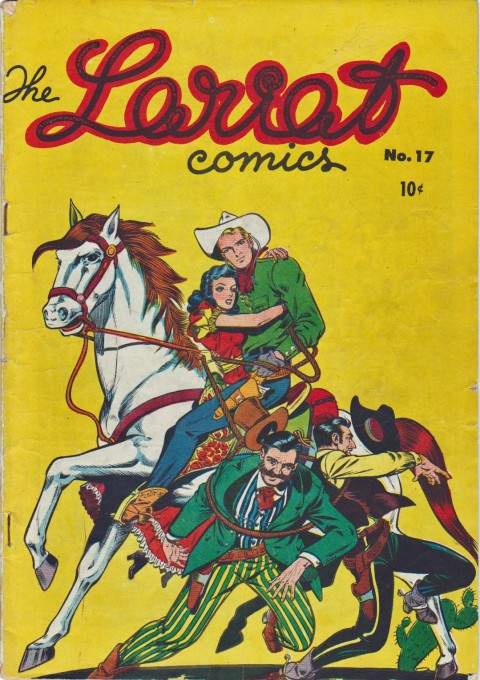
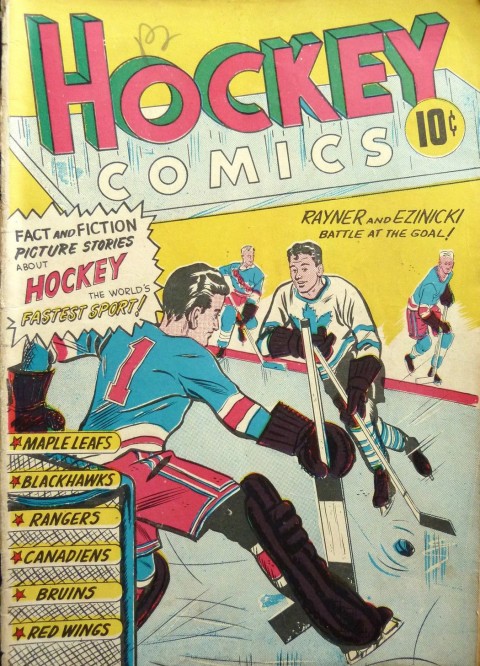
Jim Finlay: What are WECA and FECA comics?
To me a WECA comic is defined by its Canadian content and a FECA comic is defined by its foreign (US) content.
Does the WECA and FECA period of Canadian Golden Age comics have a definitive timeline where WECA era ends and the FECA era begins?
There is a period from around the beginning of 1946 to the end of 1947 where the publishers were shifting to publishing US reprint material and phasing out original Canadian content where both existed until the publishing of US reprint material became business model for the existing Canadian Publishers until the end of this period in 1955.
The vast majority of WECA comics are known as Canadian Whites which were published from 1941-46 with all Canadian content.
As early as 1941 there were books I call WECA Reprints that were published in Canada, usually in black and white much like Canadian Whites. Books I consider in this category include Fantastic Comics 16, Mystery Men 20 published by Anglo-American, Super Comics nn, Black Hood nn, Bingo Comics 1 by F.E. Howard, and issues with colour interiors like Atomic Comics 1 by Daniels Publications, Active Comics 29, Dime Comics 29 by Bell Features.
During the WECA period there were also books I call WECA Hybrids that were published in Canada with a mix of Canadian Content and US content. They were mostly in the later 1946 part of the WECA period Books I consider in this category include Weekender V1_3 by F.E. Howard and Unusual Comics 1, Jet-man Comics 2, Terrific Comics 3, Red Hot 3, F.B.I. 2 from Bell Features.
The vast majority of FECA comics are what I call FECA Reprints which were published from 1946-55 with all US content. What makes them Canadian is they were published in Canada, the bare minimum that all Canadian comics share.
Some are indistinguishable on the cover from a US edition, unless you know what to look for, and you need to see the indicia or back cover to ID its origins. Some of the more well-known FECA Reprints have original cover art and titles that are clearly distinguishable from other comics and make them more sought after too. Books I consider in this category are many and include Famous Athletes 1 by Anglo-American, Thrilling Danger nn, Spy and Counter-spy 2 by Export Publications and Zoot 11, Terrific Mystery 34, Jungle Drums 20, Ranger Trails 18 by Bell Features and Sun Girl 3, Western Winners 8 by Superior.
During the FECA period there were also books I call FECA Hybrids that were published in Canada with a mix of US reprint material and Canadian content. Books I consider in this category include Dynamic Comics 24, Red Seal 19 by Superior, and Astounding Jungle Adventures 10 by Randall Publishers.
During the FECA period there were also some books I call Post WECA books that are all Canadian content WECA type books in the FECA period. The most prominent one is Super Duper 3 by F.E. Howard with the final Canadian Whites stories from Bell in colour that I would argue belong in the WECA era with only the publication date of May 1947 holding it back from joining it. Other books in this category include Science Comics 1, Captain Hobby 1 by Export Publications but their publication dates in the early 50s make them more WECA cousins than members of that immediate family.
If you think I left some books out in the above categories and they are Marvel Mystery Annual nn and Captain America Annual nn there is a reason. Although some will consider these books Canadian I would argue they are not. They were printed in the US with all reprint material from US books except in black and white. If you look at Canadian books like Zor the Mighty 1, Comic Crimes 11 and Bing Bang V3_30 no one would consider them UK comics just because they were distributed in the UK. Their publication in Canada makes them Canadian just as these two annuals being published in the US makes them US comics even if they were distributed in Canada.

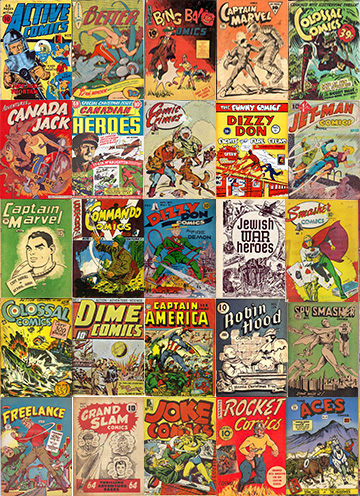



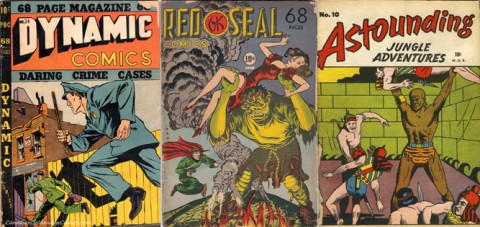
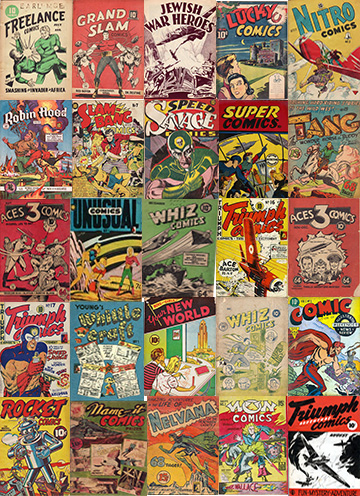
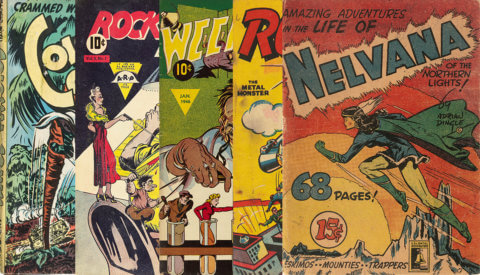
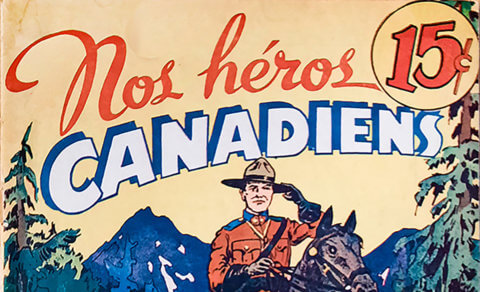
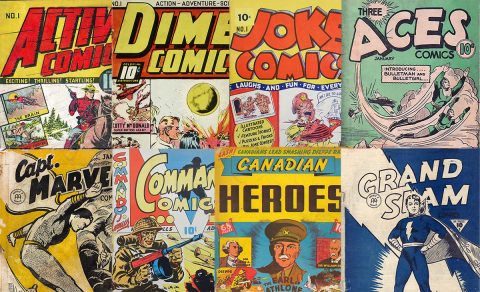
As usual, a ton of fascinating new information and context here and food for thought. I expect that to most observers on the fringes of this hobby this looks like academic hairsplitting as most of what is being talked about are still largely mythical objects. I put myself in that category but I’m fascinated none-the-less and I’m glad you are sharing these discussions.
Ivan, i have that Canada Jack comic you present, which i paid a pretty penny for back in the ’80’s. Please share would you know about it. Was it a one shot? Thanks.
Thanks for your thoughtful comments as always, Bryan. You are right to say that the tone of this post may seem to be pedantic but I assure you that it’s aim is clarification and placing these books in perspective. It’s just trying to present as many angles on these hard to find books as possible.
AT first this seems like a fairly straight-forward cut-off, as you propose. But with more examination it seems a far more complex issue. I do agree with you on U.S.produced books, like the Captain America, they are not WECA, and neither are later reprints of U.S. material. In loose terms, I would advocate including ALL Canadian produced, original material from the 1940s, without a date cut-off. I think your date artificially excludes those late titles like Super Duper that must be included.
While it’s tempting (for me) to say that fans will label it as they will, and we have to live with the results (like the “beginnings” of the U.S. Silver Age), at this early point in time you and other experts can really shape future dialogue and labels. So totally worth discussion. And now I have to think long and hard about it. But since I’m not a Canadian, nor do I have an extensive collection, not sure how much my opinion is worth. You guys are the experts.
On another front…the two collages of covers that you created above would be PERFECT as prints or posters. Not only are they filled with cool, rarely seen comic covers. But they can help to promote the wonders of WECA books. The are captivating.
I’m trying here to plant this seed Ivan–if I was a publisher I’d love to make a print or prints like this available to the public–not to make a profit, but simply to get this wonderful material in front of more people who’d like it.
They are so cool. Maybe as a Kickstarter premium with one of the new projects–possibly even yours, whether Kickstarter or not. You could always fold it up and include it with the book. Are the copyrights expired so someone could produce such a print without trying to get dozens of clearances?
So happy to see new posts from you. Can’t tell you how much I enjoy reading these.
Stephen, I guess the Canada Jack comic you are referring to is the one at the start of the second row in the mosaic of covers that begins this column. This is a one-shot 1945 compilation of Canada Jack stories that appeared in the Canadian Heroes comics and has an original cover. Hard to find these days but you would certainly get more for it today than what you paid for it thirty years ago.
Great comment as always, Bud. If you ever get up to a Toronto con it would be great to meet you and show you more of these books first hand.
I agree that books like Super Duper 3 are very important but I still wouldn’t include it as a WECA book though I could consider it to be an addendum to the WECA period or a “WECA sattelite”.
I guess, Bud, that I don’t want to just bring these WECA books back into the general collecting consciousness of people interested in comic books. I want to bring back into the total Canadian cultural consciousness that exists above the 49th parallel. These books came about because of Canadian politico-economic action and if American books hadn’t been prevented from flooding across the border for those 5 or six years, they would never have existed. For this short period it was as if these books were just about the only comics in the world and they were created by Canadians for Canadians. They were truly our own comics like comics had never been before or have never been since. It was a special window that allowed them to exist and I want to recognize that above all. Sure Super Duper 3 takes some old stories, some of which hadn’t been published before and puts them out, but over 300,000 of the copies produced in Canada were shipped south of the border for distribution in the States (that is why it’s a more common book than most “Whites”) just two weeks after far fewer copies were distributed in Canada. This is an orbit that almost none of the WECA books ever had. There’s a spot for Super Duper 3 for me but just not inside the WECA window (I certainly stand to be solidly corrected on this as time goes by but right now I’m pretty firm on this).
As for your second point, Bud… Oh, if only you WERE a publisher! I built this mosaic of covers up because it was fun to do and I just love the way these covers look. The only copyright permissions that I’m aware of that would be needed are for the Bell covers because contents of those 300 or so Bell Features comics in the National Library and Archives of Canada are still held jointly by the Library and Archives itself and Corus Entertainment who bought out Nelvana Studios. I had to get permission from these two entities to reprint panels from these comics in an academic paper that’s coming out this year.
My task now is to finish my book by the end of the summer. I might have to ask those wonderful ladies Hope and Rachel, who have had so much experience in arranging kickstarters, if they would consider one for my book and consider publishing because I don’t seem to be getting much positive response on it from established publishing houses,
Really interesting post, as always. I have been working on getting the Bell Features Collection here at LAC fully processed and I’ve found myself considering some of these issues as I go through. For example, I would consider LAC’s holdings of Active Comics (#1-28) to be essentially “complete,” because as I understand it only the first 28 issues have all-Canadian content. It’s also interesting that the collection has always been organized so that the core seven titles are grouped together, while the later hybrid and reprint titles, which basically constitute a second phase of Bell Features’ activity, are almost a separate series, in archival terms. I have certainly learned a lot through handling this collection!
I’ve made no bones about the dislike I have for your nickname for these comics as ‘wecan’ books Ivan. But if you wanted something besides Canadian ‘whites’ to call them because some things wouldn’t fit as they were in colour (ie: Super Duper #3), then I find this whole thing humorous as you seem to have painted yourself into the same corner with a term that ends with a time period that excludes the same books.
Give it up and call ’em all ‘golden age’ Canadian comics and include them all. Then just distinguish between those with original art, and those with reprints of American comics.
I wasn’t going to comment on this at all, but there’s my two cents worth… (or do we all have to use nickles now)?
Thanks for your comment, Meaghan, The Bell Features fonds, and especially the collection of comics will be a valuable resource to all individuals who want to find out more about these books but can’t locate copies. You and your colleagues have always been a great help to me whenever I’ve gone up to the Wellington St. location to look at material related to these books. So far I’ve only looked at the original art pages and textual material in your collections. I’ve often wondered how you store the comic books themselves. Are they in stiff or soft mylars with backing or just “dry” in boxes?
!van, i applaud and encourage you to move forward! One of my major criticisms of Overstreet for many decades, was all the info. and research done by the J. Bails, Keltners etc done without financial rumination, was not incorporated in the Overstreet Guides for so many many decades! That one of the reasons we have this mindless speculation bubble of relatively recent comics and the race for highest grade without much consideration to much else!( a sought of micro “Flash Boys” )
Jim, your opinion is always valued here and your position on my use of the term “WECA” (“wecan” sounds a bit too witchcrafty) is one that many people take. When I go to a con and talk to dealers about these books, I still call them “Canadian Whites” or “Canadian Golden Age Books” because that is the currency in play today among dealers and a lot of collectors. In the end my idea to call these books WECA books has little to do with the fact that some were in colour and some were not and to say that that’s the fulcrum on which my argument turns sadly tells me that you’ve missed, or simply too quickly dismissed, what I have said above and what I have always been trying to say about this period in Canadian comics.To me it is the circumstances that allowed these comics to be published. It has very little to do with the super heroes that appeared in the books and whether or not collectors want to lump them together or not. It has to do with creators behind these books as well who had all stopped doing them by the end of 1946. That’s what earns this period in Canadian comics its distinction and not the colour of the pages. Maybe a collector can refer to all the comics published in Canada between 1941 and 1955 as “Golden Age Comics” but that’s just unjustly and too easily stamping an existing American template on our own comics. It’s a cookie cutter that just doesn’t have a maple leaf shape. Those individuals who are lucky enough to have read these original books in the form they came out (the reprints are helpful, but they are taken out of the original context) must get what I mean. Some collectors, I think, sadly fill their holes in the runs of these old comics without actually opening them up and reading them and possess them but really don’t know what they have.
Your point is a valid one that I understand and many people will feel the same way but after have read hundreds of these books and looked at the lives of the people who created them I just can’t dilute what went on between 1941 and 1946 with the stuff that came after just to make it fit with the American Golden Age or just to make it easier for dealers and collectors to banter about these books at cons.
I may be a lonely voice crying out across the Canadian tundra right now but I’m going to keep on crying and the Inukshuk on the hill nearby is going to be witness to it.
Wow! There’s a buck ten’s worth right there.
The fever is a powerful one, Stephen. Millenials can easily become “zombified” by CGC decimal points and trying to predict character appearances in movies and TV. This is comic collecting on a surface level and I guess has its counterpart in all collecting fields. I start getting OAS checks next year and looking back at over 50 years of collecting (the largest chunk of time which was just spent sitting on long boxes of material I had bought and read in the sixties at newsstand prices) I often think of what it takes to go out a winner at this hobby. Winning a hockey game is easy. It’s just the team that gets the most goals. When you get near the end of life and look back at your comic collecting, have you won because you’ve put together the most complete run of a certain rare title, or because you own a number of signed pages of original art, or because you’ve got “the highest single graded copies” of some key issues” or because you’ve managed the most number of profitable “flips” and become very rich. I’m not so sure. I think those guys you mentioned like Bails and Keltner went out winners without doing any of the things I’ve mentioned. Even if you just find a box of old beat up Dells you used to drag out onto the old back porch to read on a hot August afternoon as a kid and you give them to your grand kids or even if they just show up in an estate sale after you’ve gone, you go out more of a winner than most of today’s “collectors.”
Actually, I’m in the process of rehousing them right now! We had them in soft mylar but we are switching them to stiff archival paper envelopes — technically I think they’d be called L-velopes because they are open on the top and fore-edge (my hope is that this will prevent any chipping from taking them in and out of the housing). We felt that the mylar was not the best option due to the acidity of the paper. My colleague in conservation does not think the comics are good candidates for chemical deacidification so we want to try to give them the friendliest environment possible. We had them in magazine boxes before, but now they’re going into acid-free comics storage boxes (same as the ones you’d buy in a comic book store, but preservation standard). I prefer these because they have lids to keep the light off, although because the comics are kept in the vaults here they don’t get too much light exposure anyway.
You might not be aware that the Bell Features Collection has recently been fully catalogued. I’m quite excited about this! We have a collection-level record that will show up if you search AMICUS for “Bell Features collection,” and then a separate record for each title. 🙂
Thanks, Meaghan, this is really helpful. I hope to get up to look at them this summer.
Whites, WECA, FECA, it’s all the same to me. Just plain cool, old Golden Age Canadian comics. I can understand the hair splitting when it comes to trying to designate the different reasons for publishing in Canada. I once had a fascination with just the reprints of Yankee material, being so much more rare than their southern counterparts, simply because of the size of the market, but, over the years, I have come to realize how much more significant are those purely Canadian books to our cultural history.
I really enjoyed hearing from Meaghan too, and, of course, it’s always a pleasure to hear Ivan’s take on anything to do with Canadian comics. Still the number one reason I look to Comic Book Daily.
Thanks for checking in, Mel and you’re right, this is just my take on these books. People can buy in or choose to keep their own perspectives on these books. I’m just sharing the significance they have for me.
That cataloging of the Bell Features Collection sounds great Meaghan. What information can we expect to find on a record search? Could we get what stories are inside some of the individual issues, …say The Brain comic for instance?
It would be wonderful for researchers to get a look at what was inside of the comics the LAC has that weren’t recorded on the Bell & Howell microfiche set.
Hey Ivan maybe we should consider just calling it Canadian Golden Age like Mel suggested, but have the time line sub categories WECA and FECA with the understanding that WECA era contains all Canadian content with books being published in Canada, and FECA era contains a mix of Canadian and or American content but published in Canada. Regardless of content, they are still uniquely Canadian by most everyone’s standards, Also Bud’s idea of making that collage a poster is a excellent idea and second that you should include it as a folded bonus for your book
Excellent! Do let me know when you’re coming in. 🙂
jim b., sorry, I lost track of this thread a bit! Unfortunately we’re not able to be that detailed in the records for individual titles; however, I am working on a more “archival” type finding aid for this collection that goes into more depth. I can tell you that The Brain comic we have seems to be a proof – the contents are actually just a reprint of Triumph #29. My comments seem to be appearing as new threads rather than replies … hopefully you will see this!
Thanks for the reply on this Meaghan, a proof copy. That’s actually a fascinating bit of information. I wonder now if that’s why I haven’t come across a mention of this issue, outside of back cover ads on later Bell books …it may not have actually been published.
If the book ever gets finished and published, Tony, an insert like that may be a good idea but I’d have to get some permissions for the Bell Features covers. For me the period and the time window is still the most important thing. This WECA period still had a mix of books with just American content and the period after it still had books with previously unpublished stories of some heroes that belong to the WECA period. Though, for me these post-1946 books don’t belong in the WECA period, yet they are in someway connected to it and tells us a little more about it. But I fully understand the the perspective you and other collectors of these books that says they should be grouped together as a unit. I guess I’m too much of a purist in this way.
I definitely will, Meaghan. If you ever need a self-contained one hour presentation on these books and the people behind them at the Library and Archives, let me know and I’d be happy to arrange my visit up around it.
I think you’re right about this book never hitting the stands. I wonder if a similar mock up copy of the book The Dreamer, which also appears in ads from this period, but has never shown up.
Thanks for this info, Meaghan. Can you tell us what’s on the cover of the Brain book. Is it just a reprint of the Triumph 29 cover? Also do the inside covers and back cover have any content, or are they blank?
That’s a good question too Ivan.
Although with The Dreamer comic I could also see it having started out with that title, and then for some reason ending up as The Smasher Comics (#7) as the character of The Dreamer is the main feature of that comic’s cover.
Hi again, sorry, I keep forgetting to check for replies here!! Regarding The Brain, the cover is not a reprint. It is a black and white image of The Brain. The inside covers are not blank: the front has Reindeer Cut Outs by Young, and the back has one of the Lou Skuce ads for Smith Bros. cough drops. The back cover has an Izzy Brite cartoon by Hy Moyer. There is no colour anywhere on the cover folio.
The Doodlebugs no. 1 that we have is similar. It’s also a reprint of Triumph no. 29 with a black and white cover. The front cover verso has a Turkey Cut Out, the back verso has the Smith Bros. ad, and the back has a Clipper th’ Cat cartoon by Cal.
Same with F.B.I. Comics no. 1 (reprint of Joke no. 24) and Jet-Man no. 1 (reprint of Active no. 26), and Red Hot Comics no. 1 (reprint of Joke no. 24). All have the black and white cover folios again with content by the Canadian artists. I am assuming they were all proofs for the new line that never quite happened. It’s very interesting!
Ivan, thank you for the offer. I do think we should meet and I’d be happy to learn more about the people behind the comics. It is possible the art archivists would be interested as well.
Thanks for this information, Meaghan. These seem to unique, try-out editions sometimes called “ash cans.” I don’t think any of us really knew that these existed. These should be considered among the most valuable of all the WECA comics.
Certainly the rarest, it would seem! The Bell Features Collection is a treasure trove.
You’re the best Meaghan, thanks for sharing this info with us!
Searching for copies of these in the wild (outside of the Archives collection) has been fruitless so it’s nice to finally have some sense of what the insides of these comics are, even if the plans were for them were intended to ended up being original stories, but never got there.
I’m very appreciative of your time in looking into this – for all us detail obsessive Bell aficionados.
Thanks for the kind words! 🙂 I’m happy to get the information out there. I’ve been having a pretty deep look at the Bell Features Collection so it was no problem at all to share. The goal is to make all this information easily accessible to the public very soon.
Hello all — I’ve been trying to learn more about Canadian Whites lately, and since this seems to be the center of the WECA universe, thought I’d ask about something that’s been puzzling me:
Can anyone link me to the text of the law as originally passed? A couple reasons I ask… it’s incredible how much reference on the Act out there, even from non-comics sources, focuses on the impact it had on comics and doesn’t go into detail on much else. Combine that with the idea that this was also a boom time for US paperback publishing, and it seems that they got their plates into Canada without problem (I’m no expert in this area, but I was reading some publishing & distribution history recently and that fact caught my eye).
It makes me wonder if something about the Act allowed it to target comics rather narrowly.
A link? No.
You have to physically go and look at a hard copy of the document.
Jim B. — ha… when I saw your reply earlier tonite I had half a thought that you might be pulling my leg (sorry!), and regardless, it made me redouble my efforts:
On the chance that the original source really hasn’t been widely seen, here it is:
https://archive.org/details/actsofparl194041v01cana
Acts of the Parliament of Canada (19th Parliament, 2nd Session, Chapter 1-32), 1940-1941
WECA is contained in Chapter 2, followed by Schedule 1 (list of items prohibited, unless a specific exemption is granted), and Schedule 2 (list of items which… seems to modify tariffs set forth in the previous Special War Revenue Act. I think.)
So! It’s Schedule 1 that interests us here, and it does indeed specifically single out comics, quite narrowly:
“Periodical publications, unbound or paper bound, consisting largely of fiction or printed matter of a similar character, including detective, sex, western, and alleged true or confession stories, and publications, unbound or paper bound, commonly known as comics, but not including bona fide supplements used with newspapers.”
Fascinating. And then there’s also this:
“Printing plates of all kinds, copper or other shells, matrices, positive or negative films, transfers, proofs, illustrations, covers, inserts, or other printed matter, for use in connection with the production of the publications covered by Item 184d et al of this schedule which were not printed in Canada during the three months immediately prior to December 1, 1940.”
Obviously, that closes the possibility of direct reprints from virtually any useful source, as of course we know but there’s the specific language of it, which gives us clarity on how Anglo-American’s use of the original scripts was a neat side-step of the law.
So, huh, that’s all pretty interesting… they really were targeting comics very narrowly and going to some lengths to do that.
Hi Ivan, sent you an email as well as this post. The Speed Savage is 100% Canadian. Published and printed in Canada before shipping to the UK , and in fact it even states “printed on Canadian paper” 🙂 The comic was shipped to T.A. & E Pemberton (Later known as World Distributors Limited of Manchester) who are a well known distributor of comics and annuals made up of overseas content in the UK from the war years through to date.
Hi Peter. Found your message as part of an internet search for T.A&E Pemberton. My great-father was Jesse Pemberton who married twice and formed Daisy Bank Publications. The sons of the his first wife (Thomas Abel – my grandfather – and Edwin) set up their own company, which was later run by my father and uncle until closing around 1970. The family of his second wife set up World Distributors. The two companies always remained separate. Amazing to see this information – I didn’t know about the Canadian connection.
Hi Alan, great to hear from you. There is quite a bit known about World Distributors but very little about Pemberton. I have heard a bit about Daisy Bank Publications, so called presumably because they were located on Daisy Bank in Manchester? I know they did penny dreadful’s in the early days but not sure what they progressed to after that? Not sure about the exact year your Grandfather and your Great Uncle set up Pemberton (though I’m sure Company’s House would have that information?), Nor the breadth of what they published in the early years, though I do know that they did their own comics in the 1940’s as well as reprinting or distributing American and Canadian comics as I have a few of these. As I said not much is known about Pemberton’s so I don’t suppose your uncle or dad are still alive by any chance or perhaps other family members who worked there 🙂 I would be delighted to correspond with them. Peter
Hi Peter. Great to be in contact. If you had asked some of these questions a month or two ago, I wouldn’t have had answers. My daughter found the attached recently and answers the Daisy Bank name question:
https://groups.yahoo.com/neo/groups/BloodsandDimeNovels/conversations/topics/900?var=1
I found the original company registration at
https://www.thegazette.co.uk/London/issue/34322/page/5877/data.pdf
See No. 408. The business was run out of Blossom Street until it moved (don’t know the date) to Turner St in Manchester which was more central. Blossom Street was kept as a warehouse.
My father was the last to pass away in 2014 aged 93 so there is no-one left to fill in the blanks. My grandfather was the businessman and the publications all date from the period he was active. I just purchased four books from the UK to pass on to my daughters. When my uncle and father were running the business, the company had become toy and book wholesalers, supplying the Manchester area newsagents and markets and small shop-owners – the retail outlets at that time.
It’s only through sites like yours that I realized there were also publishing comic books and that some were printed in Canada. I don’t remember my father mentioning that. There’s always something new showing up on-line!
Hi Alan, Great piece by Steve Holland who is an old friend of mine, and is like a dog with a bone when he gets his teeth into stuff like this. Just to clarify, your Dad’s company didn’t actually publish in Canada. They distributed American and Canadian comics on behalf of the North American publishers in the UK.
Sad to hear that your dad was the last of the family involved in the business, and I wish we had started this discussion ten years ago because now there is still so much of what was done that has been lost. Unless of course there are any documents or other materials remaining that are still with the family members?
Peter
Super opening up of a bunch of new facts relating to these old Canadian comics, Peter and Alan. This is the best result of these articles I put together. They serve as “bait” for the internet trolling that old family members connected to these comics (sometimes in the remotest way) often do. It looks like the question of that version of the Speed Savage Compendium being printed in Canada and then sent over for distribution is just about settled. The question remains as to the source of the cover art for that issue. To my eyes that cover is clearly not by Tedd Steele and the contents selected for the issue distributed in the UK were different. I wonder if there was the influence of a British editor or other management person who chose the content and provided new cover artwork. Thanks again, Peter and Alan.
Hi Peter,
Thanks for the clarification. The Canadian content is very interesting as I moved from the UK to Vancouver in 1974. Going through the materials still in the family:
Around 2003 there was a letter published in the Manchester Evening News asking for information on Daisy Bank and my father phoned, and later met, with James Goodman who had written the letter. About the same time, there is a letter from Chethams Library in Manchester acknowledging receipt of a copy of “Wrestling and Ju-Jitsu”.
There is a letter from Edwin to Thomas Abel dated 14th January 1918. Tom was located in the London area with the army. My father transcribed the letter as he found it fascinating. Edwin described the situation working for Daisy Bank and was looking to Tom to find a way out for both of them and their sister Alice. The way out became T.A.&E. Pemberton.
We have a small scanned photo of T.A.&E. Pemberton on Blossom Street with both T.A. and E. standing outside alongside a horse and cart. The sign says “T.A.&E. Pemberton Book Remainder Dealers”. To my amazement, the building still stands (looked it up on Google Street View). It is a location to visit on my next UK trip.
Not much else that would be of interest. I’m sure that at the time, the company was simply means to make a living and it would never have occurred to anyone at the time that it would be of interest to future generations.
Ivan – thanks for the comments. I don’t have anything to add to the comic question.
Ah Alan so you are in Vancouver like me, only I made it over in 1982, Ivan, I have a theory about the contents of reprints like Speed Savage. In the UK we had a company called Thorpe & Porter who were the distributors for DC comics and also Marvel in the early days of American comics returning to the UK in 1959. When the deal fell apart in 1967 T&P were left with tons of Marvel and DC comics. Some were returns and others had not yet been distributed. T&P decided to put the comics into annuals, and a larger version of the American Giant size type comics. There were no two issues the same, it is as if they just had all of these comics in piles and picked one off the top to go into these annuals and giant size comics at random before binding them. Maybe they did the same when they were putting together Speed Savage and their ilk to be shipped overseas? I honestly cannot see a distributor in the UK getting unbound comics then binding them and designing a new cover. I honestly think that the cover was done and the comics shipped to the UK ready to sell and not to mess around with once they got there. I can only accept your comment that the cover is not by Ted Steele but that doesn’t mean they could not have used another artist in Canada to ship the comic in it’s completed form? Peter
Peter – we can’t let the coincidence pass by! 6042711596 and we’ll see if we can get together?
Peter and Alan, it’s wonderful that you’ve both managed to connect and that you actually have a chance to get together and talk. Maybe your meeting will uncover a fact or two that will add to our knowledge of these great old Canadian books and their short-lived life overseas. Peter, I’m sure you will share anything of interest that might crop up.
As I’ve said before, that UK Speed Savage presents us with a few mysteries that I hope we can get to the bottom of someday. It was the only Bell compendium not to feature the Bell logo on it and the only one to have a date (October 1946) which shows that it came out over a year after all the others appeared in the summer of 1945. I do remember that the British distributors had an influence on another book that Bell produced around this time and that was to change the name of a Wow Comics 1946 issue that contained American reprints and a reprint of the Dreamer cover from Wow 26 to “Smasher” comics (which came out as an issue No. 7) because the British distributers felt the word “Wow” had no traction in the UK. The question remains, why would Bell alter the original cover art for the Speed Savage compendium and choose a different story set for the contents. I hope all of us keep digging.
Hi Alan,
You may be interested in looking into the novels that Bell Features produced, such as ‘The Canyon of Death’ as these are all from Bell and Pemberton’s U.K.
There is some nice info on the blog of Canadian paperbacks at http://canadianfly-by-night.blogspot.ca/
Bell wasn’t the only Canadian comic book company to produce books for Pemberton’s either, Export Pub. Enterprises had a title or two. I’m thinking of ‘I Found Cleopatra’ of which you can read more at the same website if you haven’t been there yet.